Love to nurture plants, but don’t have the luxury of garden space? A terrarium can help you exercise your green thumb, and allows you to easily bring the beauty of nature into your home. It doesn’t need much space, either — you can park it on your desk, or even better, hang it from the ceiling!
These miniature worlds encased in glass are truly magical; a sealed terrarium can sustain itself beautifully with no maintenance at all for years! In fact, the oldest terrarium on record is over 60 years old, and is thriving despite not having been watered for 50 years.
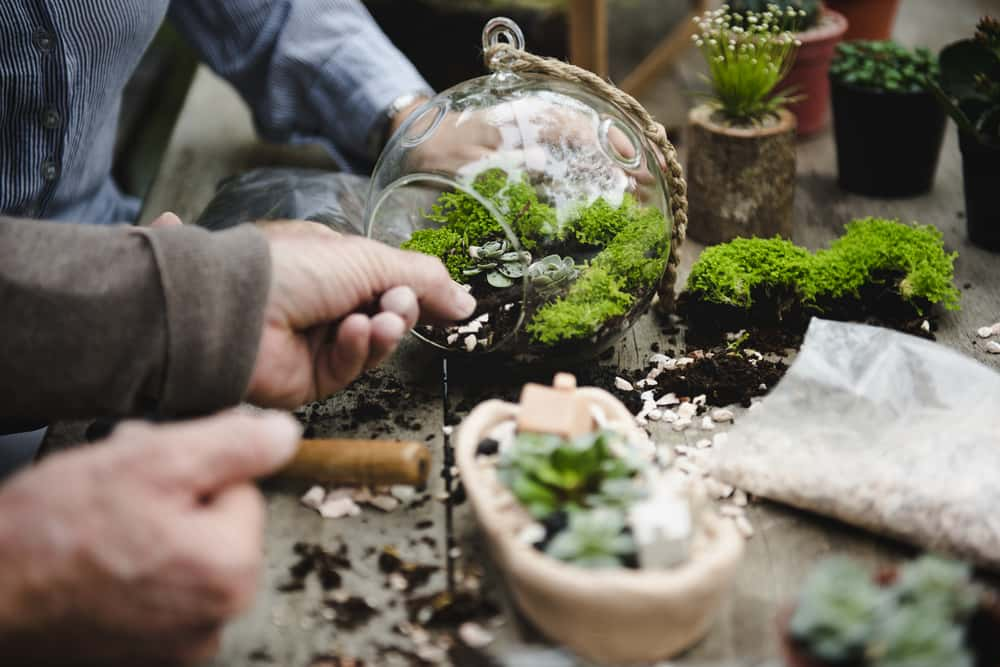
So, what exactly is a terrarium, and how can you create one of these globes of magic in your home? Let’s find out.
A terrarium is a miniature garden that’s enclosed in a glass container, which is either open or sealed. Terrariums that are sealed are a complete ecosystem in themselves. The plants generate their own oxygen, carry out photosynthesis and replicate the water cycle found in nature. A closed terrarium can even sustain some species of animals, like tiny crustaceans and insects, which also help to recycle nutrients within the enclosed system. Quite the perfect utopia, sitting right there on your desk!
Terrariums are not only eye-catching, but also boost the oxygen and regulate the temperature in your home. That’s when they are not sealed of course, as a sealed terrarium is its own little universe in miniature and doesn’t affect the outside world at all.
So, here’s how to make your own terrarium! And trust us, even if you think that you don’t have a gardener in you, you’ll be surprised to see how well it thrives!

• A clean and dry glass container (it can have a top or not, as you wish)
• Aquarium gravel or small pebbles, marbles and sea glass or sea shells
• Rocks or larger stones
• Activated charcoal
• Potting mix and some moss
• A trowel, gloves and scissors
• Some clean water in a spray can
• Plants, of course (we’ll tell you which ones to choose, later!)
• Aquarium decorations
And let’s get started!
Note:
If you’re just starting out, we suggest you opt for an open terrarium. Unless you have beginner’s luck, it could be hard to get the equilibrium inside a closed bowl just right the first time.
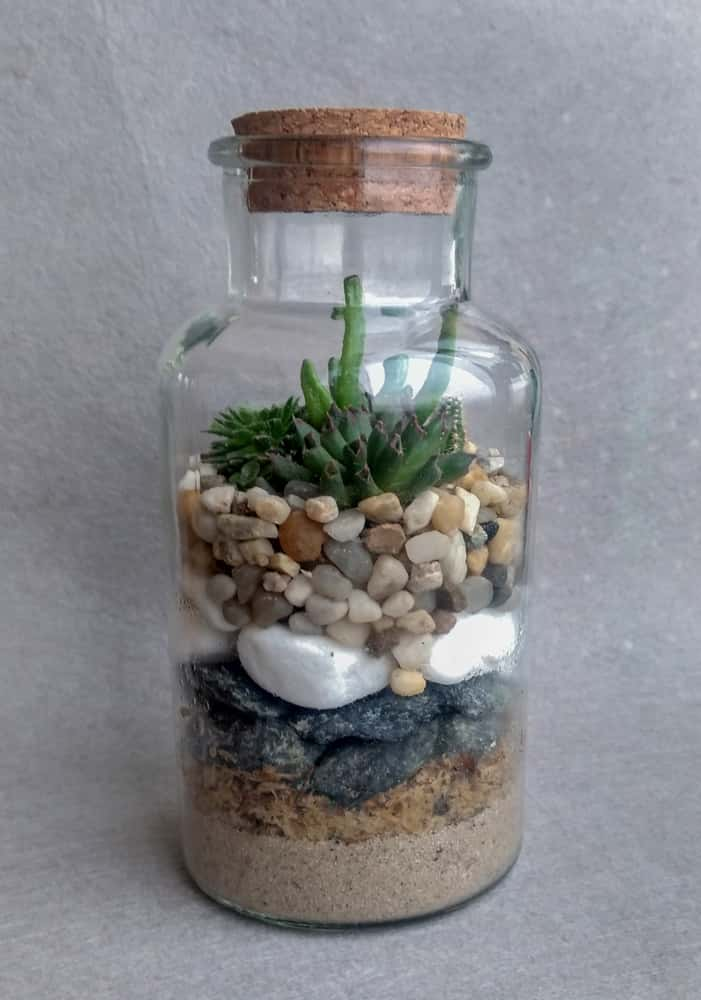
Step 1:
Start with one inch of rocks at the bottom of the glass container.
Step 2:
Add a layer of charcoal that is about half an inch thick.
Step 3:
Now fill the container till half with potting mix. A mixture of peat moss, vermiculite and perlite makes a good, healthy potting mix. Take care to ensure that the mix is sterile, as you will otherwise be introducing microbes which could throw the ecosystem off balance.
Step 4:
Gently pick up the plants, making sure you don’t damage the roots, and place them in a small hole in the soil, patting them down so they are strongly entrenched in the soil. Note that you might need to use long tweezers if the opening of your terrarium is too small to allow your hand to go inside easily.
Step 5:
Next, you add the pebbles, moss, sea shells and pretty coloured glass marbles, and any other decorations that you’d like to put in. You can be as creative as you’d like here!
Step 6:
Keep your terrarium in indirect sunlight, and spray water so that the soil is moist but not wet. If it’s a closed terrarium, you can put the lid on and shut it tight.
And you’re all done! It’s as simple as that!
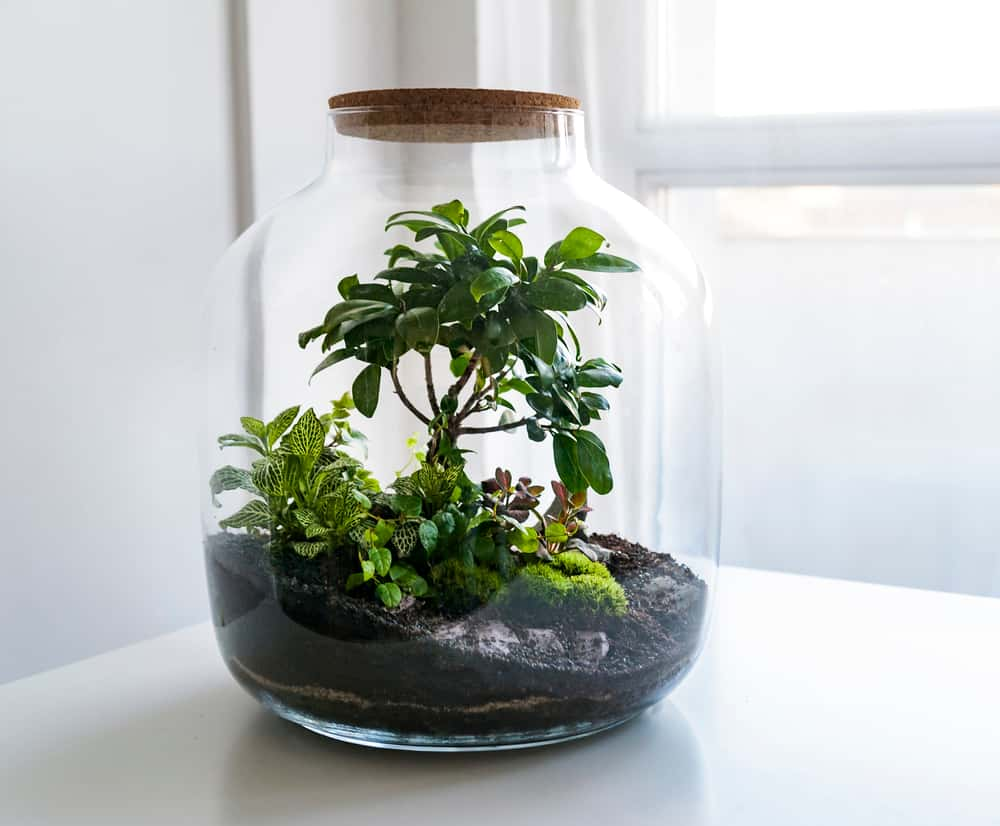
• Keep the level of soil low enough so that the plants have enough space to grow.
• You can create mounds and contours, decorate with moss, and add plants at different heights to create visual interest.
• Do not keep the terrarium in direct sunlight, as the soil will dry up too soon. If you don’t get indirect light in your home, artificial LED ‘grow’ lights will help your plants to thrive.
• If the roots are too long, you might need to prune them so that the plants do not grow too tall.
• Never clean the inside of the glass with a glass cleaner, as it will change the pH measure of the soil.
• If your terrarium is closed, keep inspecting the lid to see if there’s any condensation forming. It might be a good idea, at least till you get the hang of it, to open it up for an hour once a week or so, so that fresh air gets in and excess water vapour is removed.
• Plants that are growing too big for the terrarium must be pruned.
• As the leaves and potting mix decay, organic fertiliser is created, so the soil does not need to ever be fertilised!
• Keep monitoring the leaves for any sign of pests which could destroy the entire terrarium. Limp, yellowing leaves are a sign of disease.
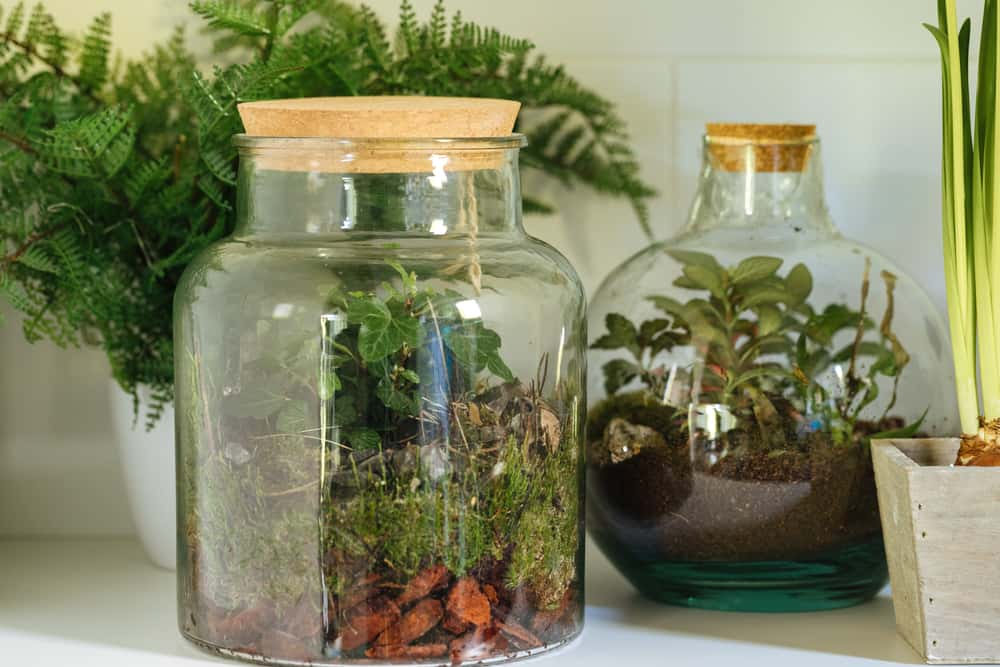
Always look for slow-growing plants, and choose varieties that will not grow too big. Some examples of terrarium plants are:
• The Friendship plant grows to a maximum of 1 foot in height and has beautifully shaped leaves.
• Holly ferns have tiny, glossy leaves and look like a miniature plant.
• A Variegata plant grows to be only 6 inches tall and thrives in low light.
• Succulents like the starfish cactus grow very slowly and are tiny even when they are full sized.
• A Baby’s tears plant grows abundantly and can be used to fill up any space within the terrarium.
• African violets can add lovely bursts of colour, and come with pink, blue, purple and white flowers.
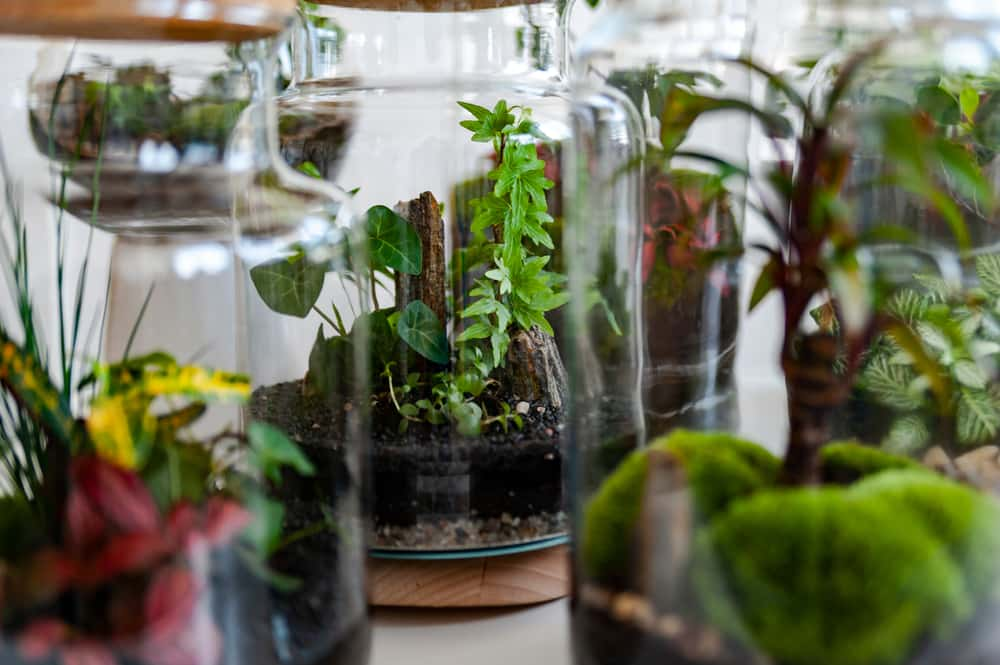
Your terrarium can give you endless hours of gardening pleasure, and is very easy to care for and nurture. Looking for more landscaping tips and ideas for your home? The HomeLane team has plenty of ideas!

 EXPLORE MORE
EXPLORE MORE EXPLORE MORE
EXPLORE MOREBy submitting this form, you agree to the privacy policy and terms of use